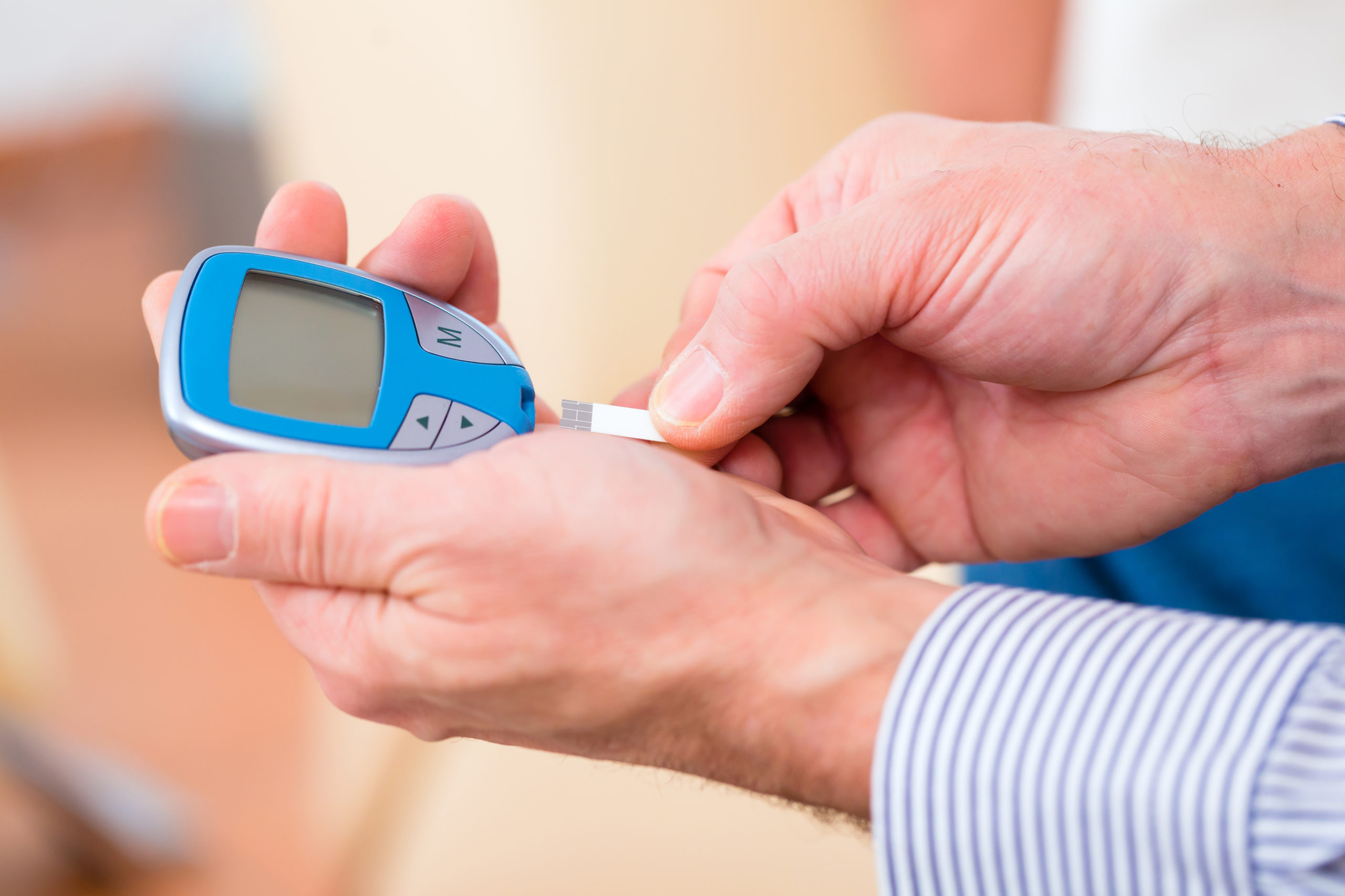A Primer on Diabetic Retinopathy

Diabetic retinopathy can affect anyone with diabetes. Learn how to spot symptoms of the condition and discover the treatment options available.
Anyone with diabetes is at risk of developing diabetic retinopathy — in fact, between 80 and 85 percent of people with Type I or Type II diabetes will develop some degree of the disease during their lifetime. People with Type I diabetes are at slightly higher risk of developing retinopathy than people with Type II diabetes, but both are susceptible.
Diabetic retinopathy occurs when excessive sugar in the blood leads to blockage of the small blood vessels that nourish the retina, so the longer you’ve had diabetes and the less controlled your symptoms are, the more likely it is that you’ll develop the condition. Once those blood vessels are blocked, the body responds by trying to build new blood vessels. However, those blood vessels don’t develop properly and can easily leak into the eye.
Fortunately, careful management of your diabetes and familiarity with the symptoms of diabetic retinopathy can help you protect your vision. Controlled blood sugar, regular exercise, and a healthy weight are some of your best defenses against the disease, but it’s also important to recognize symptoms before they progress.
Symptoms of Diabetic Retinopathy
Some people may not have symptoms at all in the early stages of diabetic retinopathy, which is why it’s important for people with diabetes have yearly eye exams with a vision professional. However, if any of these symptoms begin to appear, you should see your eye doctor right away.
Symptoms of diabetic retinopathy include:
- Mild blurriness in near or distance vision
- Spots or dark strings in your vision, called floaters
- Dark and/or empty areas in your vision
- Sudden loss of vision
If left untreated, diabetic retinopathy can cause severe vision loss or even blindness. On the other hand, when the disease is detected and treated early on, the patient’s prognosis is usually very good. While doctors cannot cure diabetic retinopathy or reverse the damage that it’s caused, they can halt its progression and stabilize the patient’s vision.
Treatments for Diabetic Retinopathy
While prevention is always your best defense against diabetic retinopathy, there are many treatments available. Laser treatment is one of the most common treatment options; the laser controls and shrinks the leaking blood vessels and prevents the growth of new blood vessels. Laser treatment does not cure diabetic retinopathy, but it can slow or stop the progression of the disease.
Diabetic retinopathy can also be treated with a vitrectomy. In some cases of the condition, the vitreous (the middle of the eye) can become flooded with blood. A vitrectomy involves draining blood from the vitreous and replacing it with a clear saline solution. This procedure requires local or general anesthesia.
Some patients who are unresponsive to traditional treatments may require intravitreal injections or injections of medicine into the eye. The medicine can help to stop the growth of new blood vessels. Your doctor can help to determine the best treatment for you in the case that you begin to develop diabetic retinopathy. While there’s no cure for the condition, it doesn’t have to lead to serious vision loss.
Whether or not you believe you have diabetic retinopathy, if you have diabetes, you should see an eye doctor regularly. Schedule a consultation with ICON Eyecare today to talk to one of our specialists about your vision treatment.
[DISPLAY_ULTIMATE_SOCIAL_ICONS]








